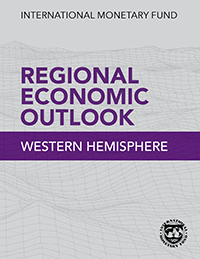Costa Rica: At a Glance
- Current IMF membership: 191 countries
- Costa Rica joined the Fund on January 8, 1946
- Country population: 5.285 million
- Quota: SDR 369.4 million
- Special Drawing Rights (SDR): 438.81 million
- Number of arrangements since membership: 18
- Outstanding Purchases and Loans (SDR): 988.2 million (December 31, 2022)
- Latest Article IV/Country Report: March 1, 2021
- Current IMF arrangement: Latest Report (November 14, 2022)
Office Activities
Who we are
The Resident Representative Office in Costa Rica was opened in July 2021 by Julia Bersch as the inaugural Resident Representative. Mr. Santiago Acosta Ormaechea became the second Resident Representative in December 2022. The Office is composed by the Resident Representative along with three local employees, a local economist, office manager and driver.
What we do
The IMF Resident Representative office in Costa Rica functions as a liaison between the IMF headquarters and the Government of Costa Rica with a primary focus to support the Fund’s Extended Arrangement under the Extended Fund Facility (EFF) and Request for an Arrangement Under the Resilience and Sustainability Facility (RSF) for Costa Rica. In that capacity, the office follows economic developments and policies in Costa Rica, liaises between the Costa Rican authorities, think tanks, civil society and labor unions and IMF staff in Washington, and coordinates IMF technical assistance. It is also a source of information about IMF views for the public, local and foreign analysts, investors, academic and research institutions, and Costa Rica’s international partners and their diplomatic missions.
IMF's Work on Costa Rica
-
October 25, 2024
Annual Meetings Chairman, Ahmed Munawar, Chairperson and Governor, Maldives Monetary Authority, World Bank Group President Ajay Banga, and Managing Director of the International Monetary Fund Kristalina Georgieva speak at the October 25th plenary session of the Annual Meetings in Washington D.C.
-
Conclusions of the XVIII Regional Conference on Central America, Panama, and the Dominican Republic
July 30, 2024
San Jose – July 30, 2024: Central bank governors, finance ministers, and bank superintendents of Central America, Panama, and the Dominican Republic (CAPDR), and IMF officials met in San Jose, Costa Rica, on July 29-30 to review the regional economic outlook and discuss policy measures needed to tackle key structural issues facing the region. The First Vice-President of the Republic of Costa Rica, Stephan Brunner, and the IMF’s Deputy Managing Director, Kenji Okamura, inaugurated the conference.
-
Raising Productivity Growth in Central America, Panama and the Dominican Republic
July 29, 2024
It is my great pleasure to welcome you to the 18th Regional Conference on Central America, Panama, and the Dominican Republic, co-hosted this year with the Central Bank of Costa Rica. I would like to thank the First Vice President of Costa Rica, Stephan Brunner and the Governor of the Central Bank, Róger Madrigal López. This conference serves as an opportunity to hold a frank and open dialogue on regional and global developments, common challenges, and policy priorities.
-
July 22, 2024
The President of the IDB and the Managing Director of the IMF Outline Enhanced Partnership to Better Support Latin American and Caribbean Countries
-
XVIII regional conference on Central America, Panama, and the Dominican Republic
July 22, 2024
Regional Economic Outlook

Western Hemisphere
Regional Economic Outlook
October 2024After successfully weathering a series of shocks, most countries in the region are converging to their (tepid) potential. Growth is expected to moderate in late 2024 and 2025 while inflation is projected to continue easing, although gradually.
With output and inflation gaps mostly closed but monetary policy still contractionary and public finances in need of strengthening, a further rebalancing of the policy mix is necessary. Fiscal consolidation should advance without delay to rebuild buffers while protecting priority public investment and social spending. This would support the normalization of monetary policy and strengthen credibility and resilience of policy frameworks.
Most central banks are well placed to proceed with monetary easing, striking a balance between fending off the risk of reemerging price pressures and avoiding an undue economic contraction.
Medium-term growth is expected to remain close to its low historical average, reflecting long-standing, unresolved challenges—including low investment and productivity growth—and shifting demographics. Worrisomely, the ongoing reform agenda is noticeably thin and could lead to a vicious circle of low growth, social discontent, and populist policies. Avoiding this requires pressing on with reforms. Improving governance—by strengthening the rule of law, enhancing government effectiveness, and tackling crime—is a priority that cuts across all areas of growth. Boosting capital accumulation requires improving the business environment, fostering competition, and increasing international trade. Greater and more effective public investment is also needed. Maintaining a dynamic labor force and increasing productivity requires tackling informality and making formal labor markets more flexible, including to adapt to new technologies. Increasing female labor participation can help boost the labor force and offset demographic shifts.
Read more: Regional Economic Outlook for the Western Hemisphere, October 2024



